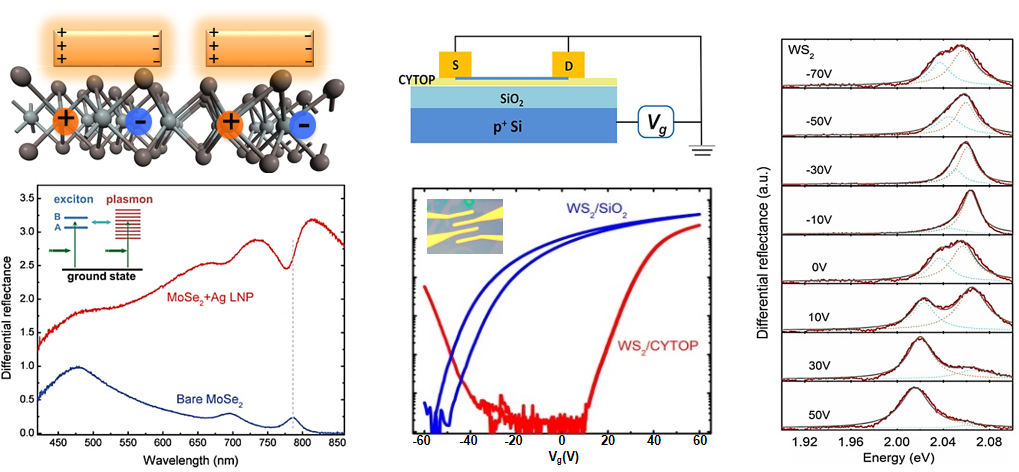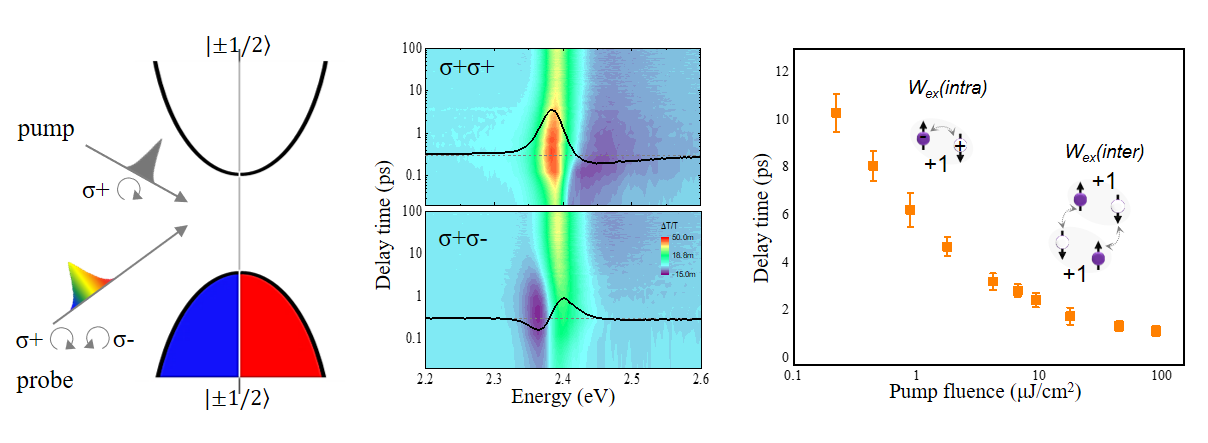1. Excitonic properties in semiconductors
Fundamental understandings of intriguing properties of excitons in semiconductors are of central importance for both condensed-matter physics and promising optoelectronic and photonic applications. We use optical spectroscopic techniques, including Raman/PL and time-resolved spectroscopy, to explore excitonic physics in low-dimensional semiconductors (such as transition metal dichalcogenides--TMDs) and bulk semiconductors (such as inorganic halide perovskites).

2. Excitonic devices for data communication/processing and sensing.
Our primary goal is to build excitonic devices for next generation communication, computation and medical technologies. In order to achieve this goal, we will develop new methods to rationally control excitonic properties and their quantum transport in semiconductors by exploiting light-matter interaction and/or electrostatic doping, which will facilitate the development of high-performance excitonic devices such as excitonic interconnects, transistors and sensors.

3. Spin-dependent optical nonlinearities of excitons
We explore spin-contrasting phenomena of excitons in novel semiconductors by using time- and polarization-resolved optical spectroscopy. Facilitated by strong many-body interaction between excitons and their spin-dependent optical selection rules, spin-contrasting optical phenomena emerge, such as the photoinduced circular dichroism (CD), which will lead to promising applications in quantum photonic and spintronic devices.
